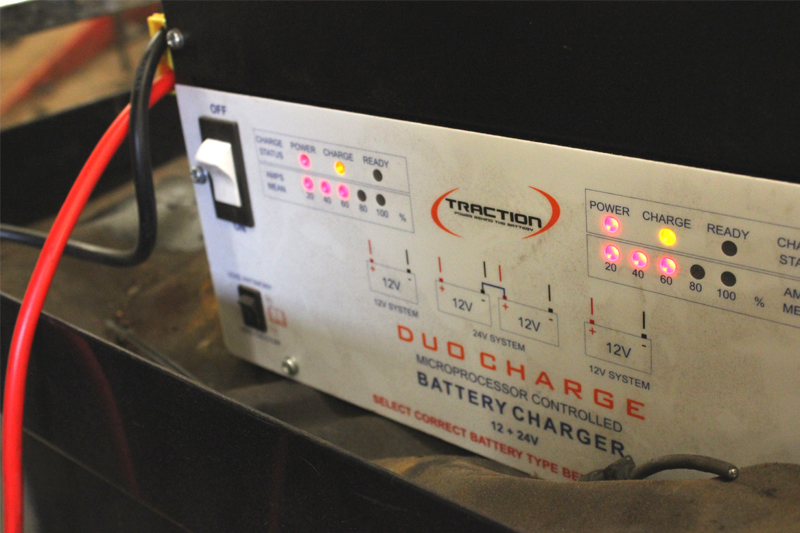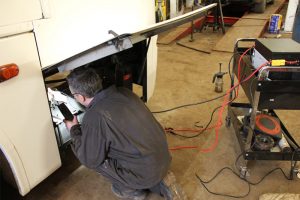
Without a quality battery charger, a commercial vehicle workshop would go nowhere fast. So back in April, Rob Cooper put the Duo 12/24 charger, from Traction Charger, through its paces. CVW finds out how he got on.
Q What were your initial thoughts upon receiving the charger?
I think I was struck most by the display. Some of the chargers I have used in the past are not always clearly marked and you can find yourself looking at a series of blinking lights with no idea as to what they are actually showing. After flicking through the instructions you may find out but this process can and should be made easier. The Duo display shows everything that you need to know, from the great, big on/off switch to the LED light sequence indicating the rates of charge.
Q What sort of vehicles have you managed to use the charger on?
The charger is very adaptable. I’ve used it on a number of vehicles that have come rolling through the door, ranging from an ERF ECM truck to a Volvo BR7 coach. In fact, I am currently using the charger on that very coach (see image below).

Q How long does it take to charge up a battery from flat?
It can take a couple of hours, but after just 10 to 15 minutes the vehicle will start. When you’re constantly getting large vehicles coming into the workshop, being able to quickly charge a battery has a number of benefits, not least being able to easily organise workshop space.
Q What would you say is the charger’s defining feature?
In a technical respect, the product is pretty spot on. It has the capability to charge batteries individually, whilst they are still connected to the vehicle. So, taking the Volvo coach as an example, it has two batteries with 24V in total. With the Duo, I can charge both of these at the same time, even if they are at different levels of charge. I also don’t have to worry about overcharging simply because the charger doesn’t overcharge, which means battery life is extended and ultimately saves my customers money down the line.
I should also mention that the charger adapts to the particular battery type, and charges at gradually increasing levels. This is reassuring for us technicians since it means there is little chance of damaging the battery, or the ECU come to think of it, from charging a battery at too high a rate.
Q To finish up, can you think of an instance where the charger has really come into its own?
On a specific vehicle, nothing really springs to mind. However, I did find the charger particularly useful when running diagnostic tests. I could leave it charging knowing that it will do its job correctly. This is a massive benefit whenever the workshop gets busy and I have multiple jobs on my mind.
It’s this reassurance, knowing that you can leave the charger on its own to do its job, which appeals to me the most I think.








